Do you guys like IPAs? As a heavily tattooed, bearded, self-proclaimed beer guy I should probably appreciate the bright, piney hoppiness of a good IPA. But I don’t. Can’t. I much prefer the sweeter, rounder, malty notes of a lager, dunkel, or porter. I’ll even take a crisp pilsner (excluding classic, American “yellow beer” with a variation of the word “light” in the name, of course) over an IPA. When the IBUs climb above fifty, I’m tapping out.
We have a lot of folks over to the house, and inevitably we end up with some IPAs in the fridge. Over the weeks they migrate to the back, lying in wait should their bitterness-tolerant owner happen back by. Mostly they just take up space and keep those half-jars of spaghetti sauce company, until now anyway. Thanks to the new Ruger Wrangler, we actually look forward to those cans of bitter beer. Let’s look at the Wrangler, then I’ll talk about how – alchemy like – it transforms IPAs from the harbinger of pursed grimaces into cans o’ happiness!
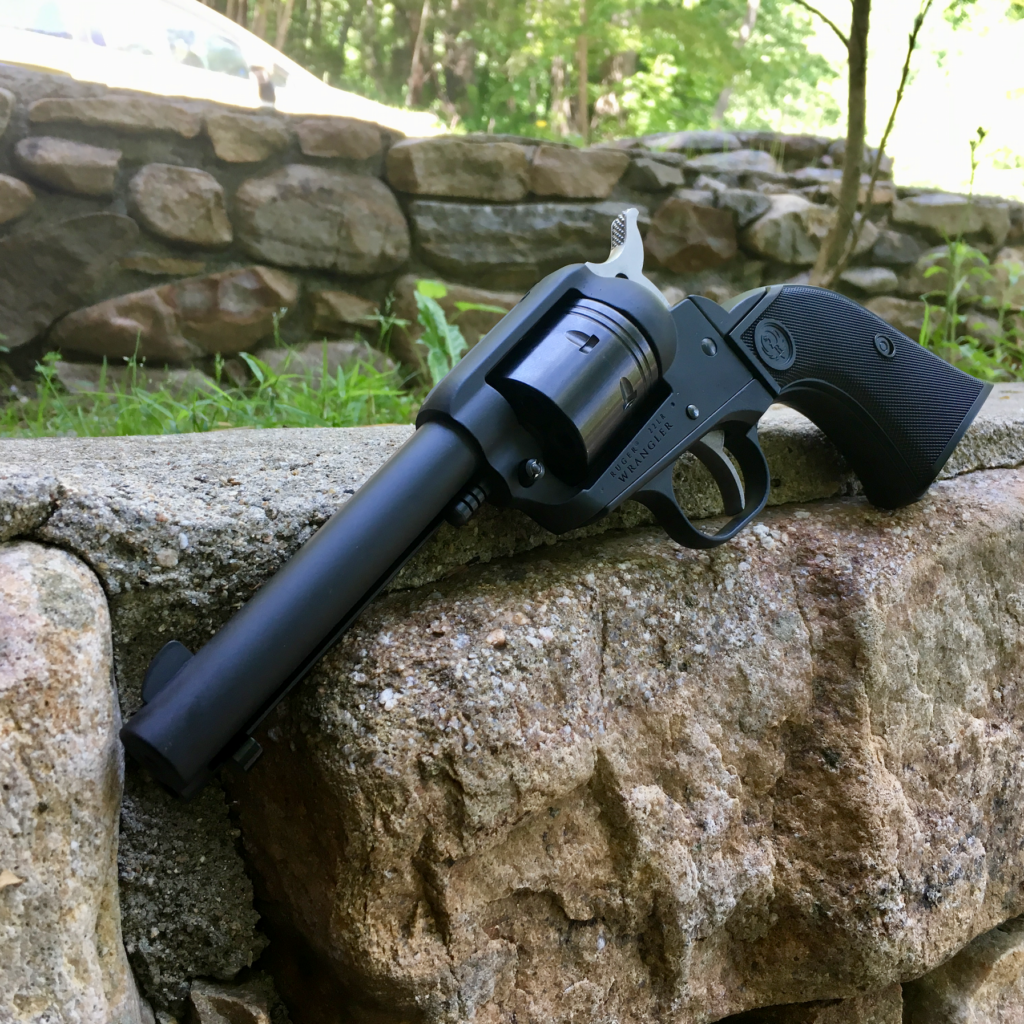
Note: this is not a Field Report. I didn’t feel it was an appropriate test relative to this gun’s most probable use-case. This review may feel a bit more playful, again as a nod to the Wrangler’s most likely use case. I hope you enjoy it!
Comparison with the Single Six
The Ruger Single Six is an iconic .22 revolver. And little wonder: it is extremely well-made, rugged, and handsome. Despite my indifference to the .22 Long Rifle cartridge, I do admit a feeling the slightest twinge of jealousy when reading the story of Mike’s first revolver: a .22 LR/WMR convertible Single Six. Since the Wrangler so closely resembles Ruger’s flagship .22 revolver there is no avoiding an examination of the differences between the two.
Perhaps no difference is more impactful than the comparative cost. The Single Six costs, well, a lot. By comparison it costs more than nearly any of Ruger’s centerfire autoloaders (excluding their 1911s). It exceeds the cost of a lot of LCR models, and approaches that of many SP101 variants. I fully understand that you get what you pay for and making steel revolvers is expensive. However, cost has no doubt dissuaded some potential purchasers – and I’m living proof of this – from the classic Ruger rimfire. With MSRPs for all variations of the Single Six north of $600, the Wrangler’s under-$200 street price is bound to appeal to the individuals with the same eye while being a bit more approachable to the price-sensitive.
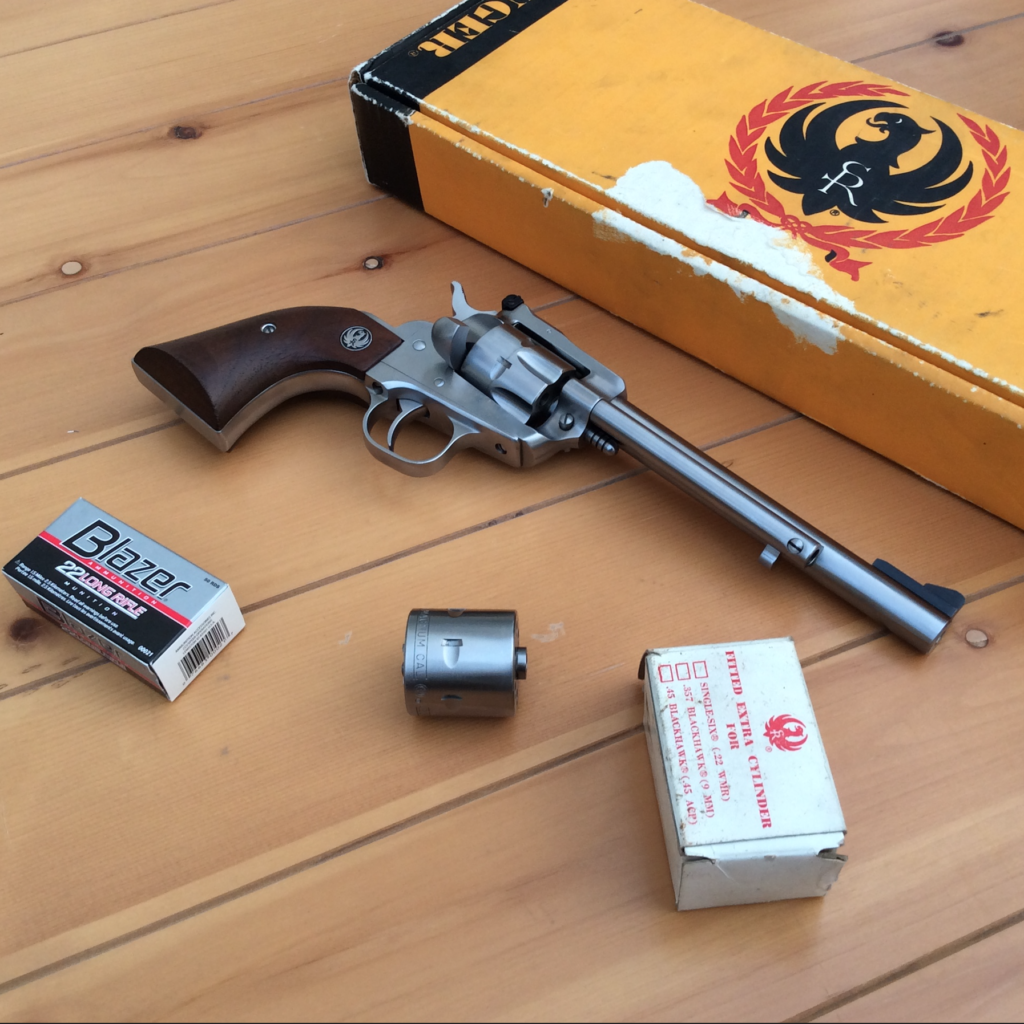
The lines of the Wrangler are clearly drawn from those of the Single Six, but there are some major differences between the two. Superficially, the color is different. Rather than blued or satin stainless finishes, the Wrangler comes in three Cerakote variations: black, burnt bronze, and silver. Though no 1950s-era deep blue or anything, the Cerakote is quite handsome and appropriate for a revolver at this price point. My sample was black, probably due to market demand for the other colors, which are quite fetching, too.
There are a couple of other pretty big differences between these two similar revolvers. The Wrangler’s sighting arrangement consists of a fixed front blade and a integral rear notch. Though I do like the silhouette this cuts, I found the lack of an adjustable rear sight to be to its – and my – detriment while shooting. Though I don’t know that this would convince me to upgrade to the Single Six for its standard-issue adjustables, it might.
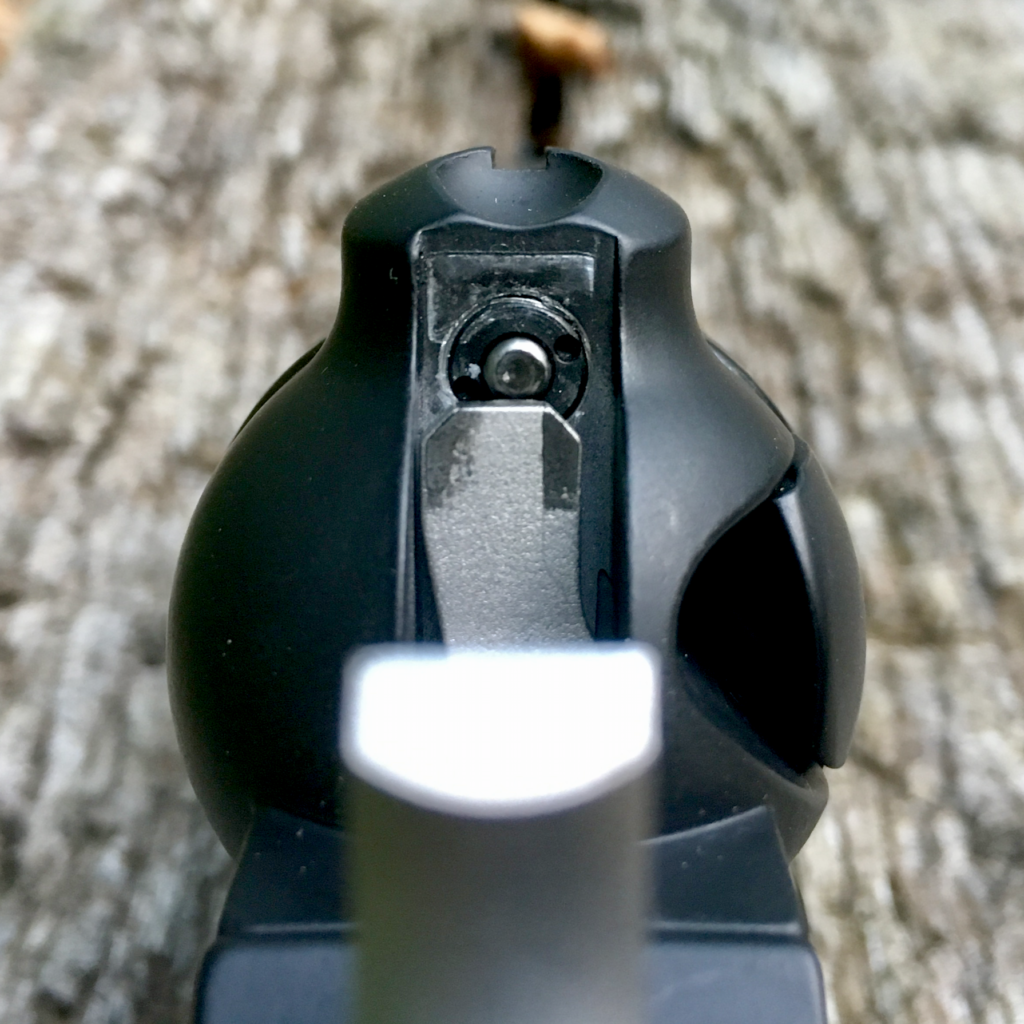
The other, major differences are the cylinder and grip frames. Rather than steel as has always been used in the Single Six, the Wrangler’s frame is cast aluminum. The barrel is still cold, hammer-forged steel and the cylinder is steel, as well. The only real impact this will have, aside from making the Wrangler a little lighter, is it precludes the possibility of a .22 WMR cylinder (in case you’re wondering, Single Six cylinders are not interchangeable with the Wrangler’s). Personally, I don’t find this to be an issue at all. If you are dead-set on a .22 LR/.22 WMR convertible, you’re going to have to spring for the more costly Single Six.
The Ruger wrangler
To this point I’ve talked more about beer and the Single Six than the Ruger Wrangler; let’s get into this little gun. The Wrangler is only offered in one barrel length, 4.62″. This is just about ideal for the casual shooting this gun will likely be used for. It’s long enough to be reasonably accurate and is well balanced, both in the hand and to the eye. The barrel accommodates a full-length ejector rod and the bladed front sight.
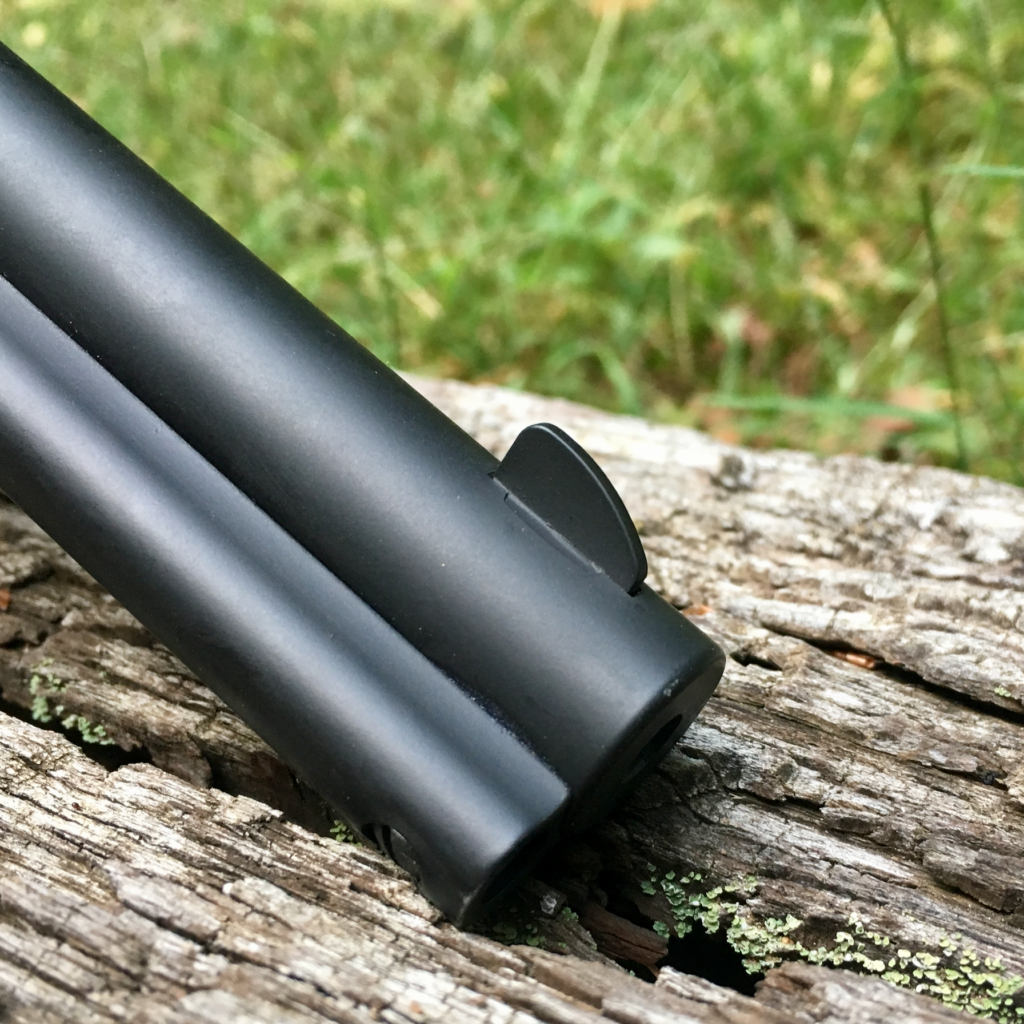
Like the Single Six before it, the Wrangler’s unfluted , 6-shot cylinder can quickly and easily be removed by removing the cylinder pin. The fitment of the cylinder into the cylinder window is fairly tight. There is hardly any visible gap between the rear of the cylinder and the recoil shield. Opening the Wrangler’s loading gate completely frees the cylinder to turn. I found this to be a boon to quick loading and unloading.
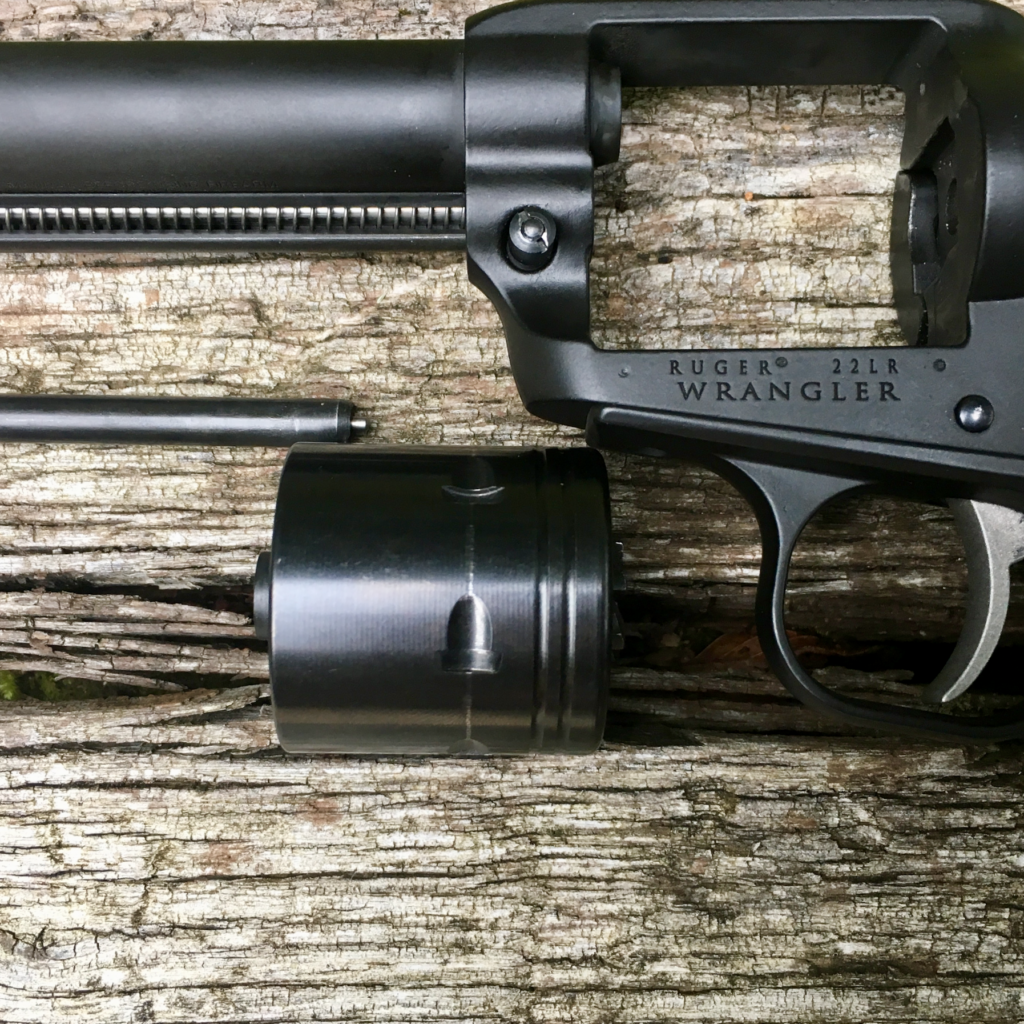
The Wrangler’s grip frame is the one area where parts interchange with the Single Six is possible; grips panels from the older revolver will fit the Wrangler. To my eye the hard plastic grips with embedded Ruger eagle are good to go as-is. They lend a sharp look and seem right at home on Wrangler, where nicer wood stocks might seem misplaced.
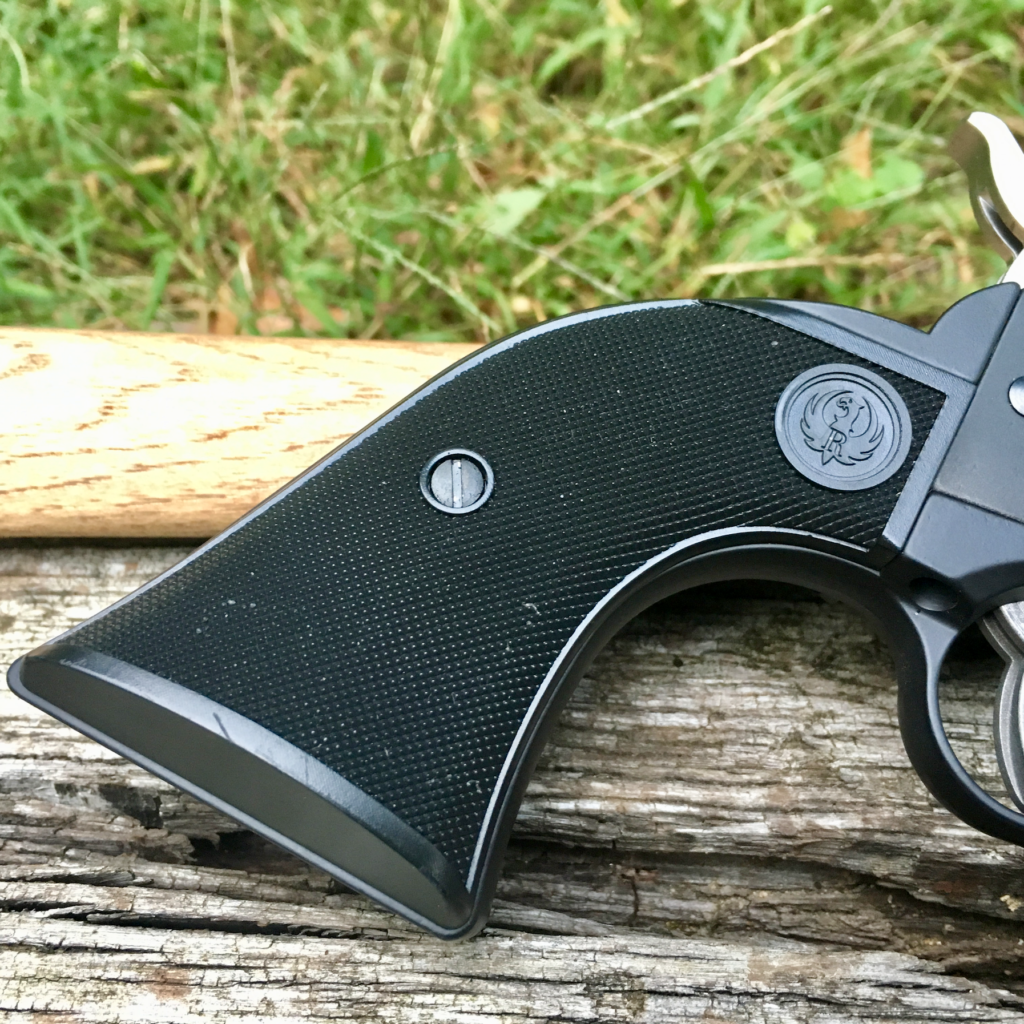
Fit and Finish
The finish on the Ruger Wrangler exceeded my expectations. I’ve handled some offerings that compete in the same price space and the Wrangler excels in looks and finish. The Cerakote provides a smooth, even finish that I’m quite fond of. Fitment isn’t bad, either. You will notice that the ejector rod housing on mine has some scratches. Those are totally my fault; let’s just say I should have foreseen something but didn’t. I mention it only to point out that this revolver has been used quite a bit, and imperfections in the finish you see here are not the fault of Ruger.
If you look closely you can probably find a few things to complain about. For example, the butt of the revolver reveals a fairly rough casting seam. I’m a function-over-form type of person, so I really don’t mind this at all. Overall the execution on the Ruger Wrangler is excellent and I wouldn’t hesitate for a second to recommend it.
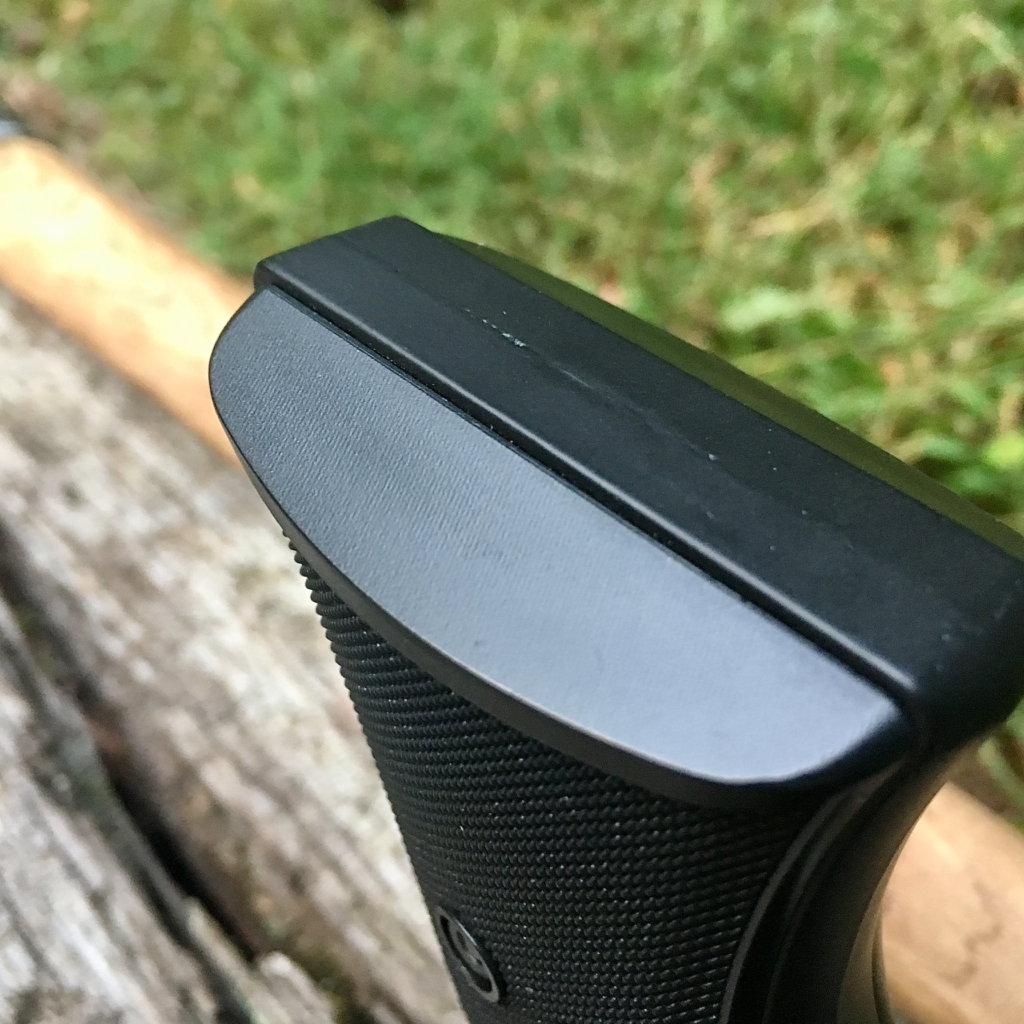
I don’t know why, but I’m always fascinated by the markings on firearms. Perhaps it’s a remnant of admiring handguns from afar for so many years as a child. I also think the quality of a manufacturer’s engraving can speak indirectly to the overall quality of the arm itself. In any case, I really like the minimal markings on the Wrangler.
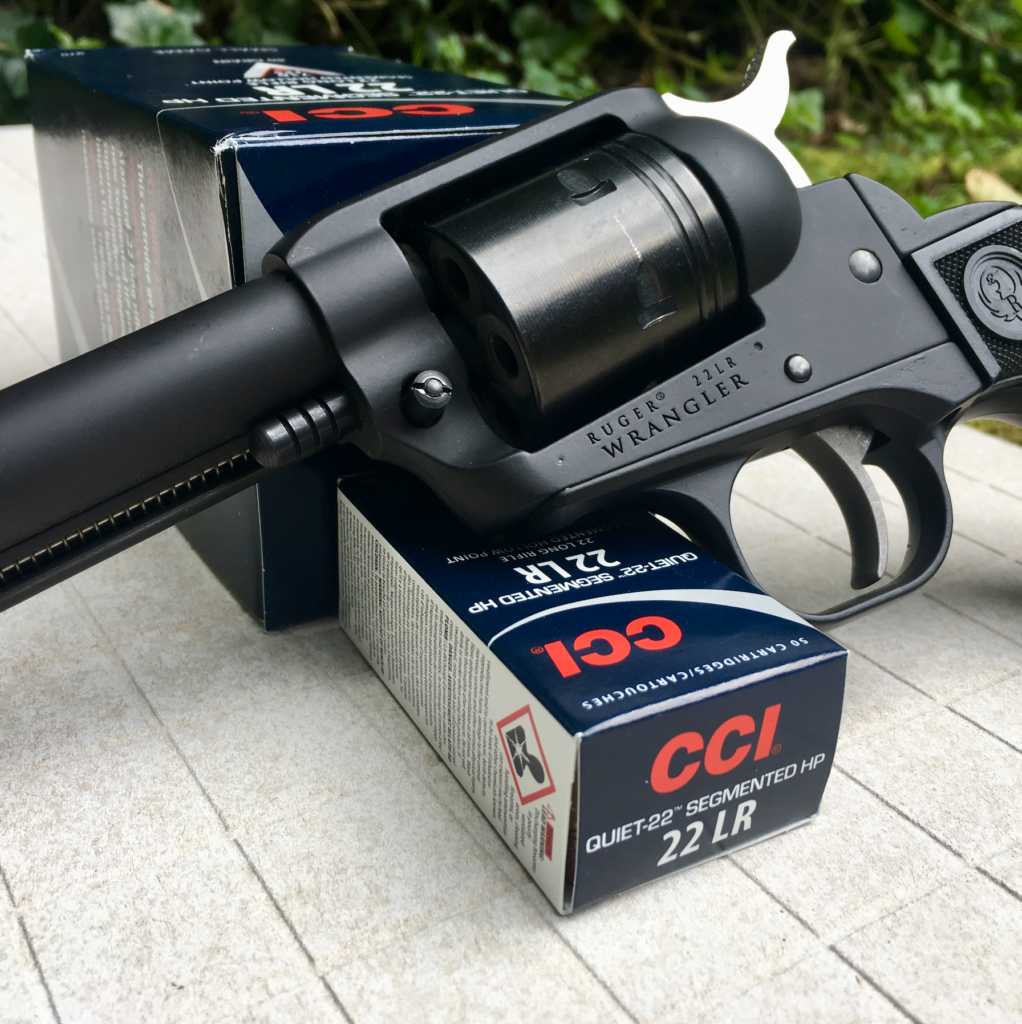
The left side of the frame is very cleanly and neatly marked, “RUGER 22LR” and “WRANGLER”. The right side of the frame holds the serial number. At a passing glance you’d think that’s it: surprisingly little verbiage on a modern firearm. Closer inspection will reveal the standard legal statements. I’m quite pleased to report these are in fine text and placed underneath the barrel
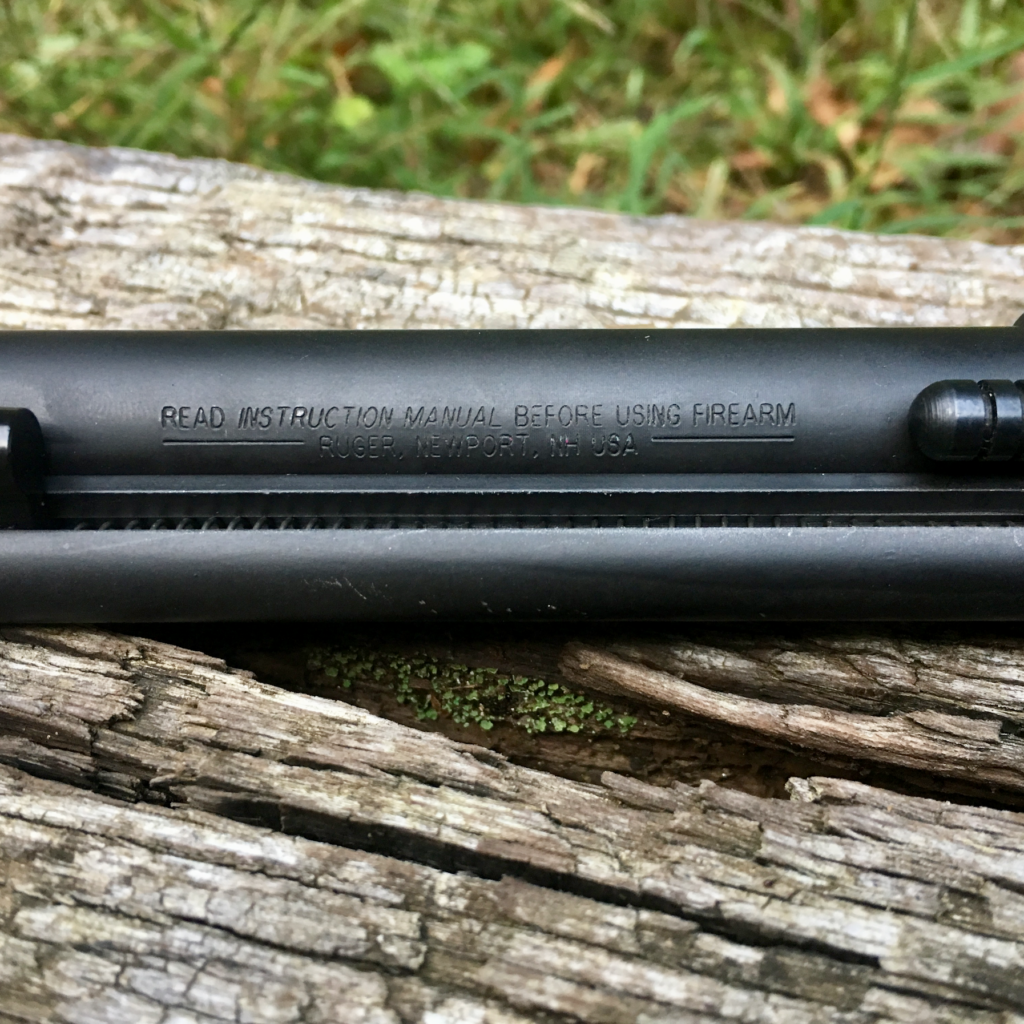
Shooting the Wrangler
Overall the Wrangler does exactly what it’s supposed to do: turn gunpowder into noise and poke holes in tin cans! Let’s discuss a few of the finer points, though.
Trigger: Obviously the Wrangler is a single-action revolver. The hammer is sharply checkered and provides a very satisfying series of clicks upon cocking. The trigger pull isn’t “glass rod” smooth or anything. There is some obvious, mushy travel before it breaks. While I would certainly prefer a smoother trigger, it’s workable and I’ve made it work for me (see the next section). The trigger’s weight is much better than it’s felt travel. I recorded six trigger pulls with the Wrangler. These were very consistent and averaged 4.25 pounds. To me this is just about an ideal weight for a single-action trigger.
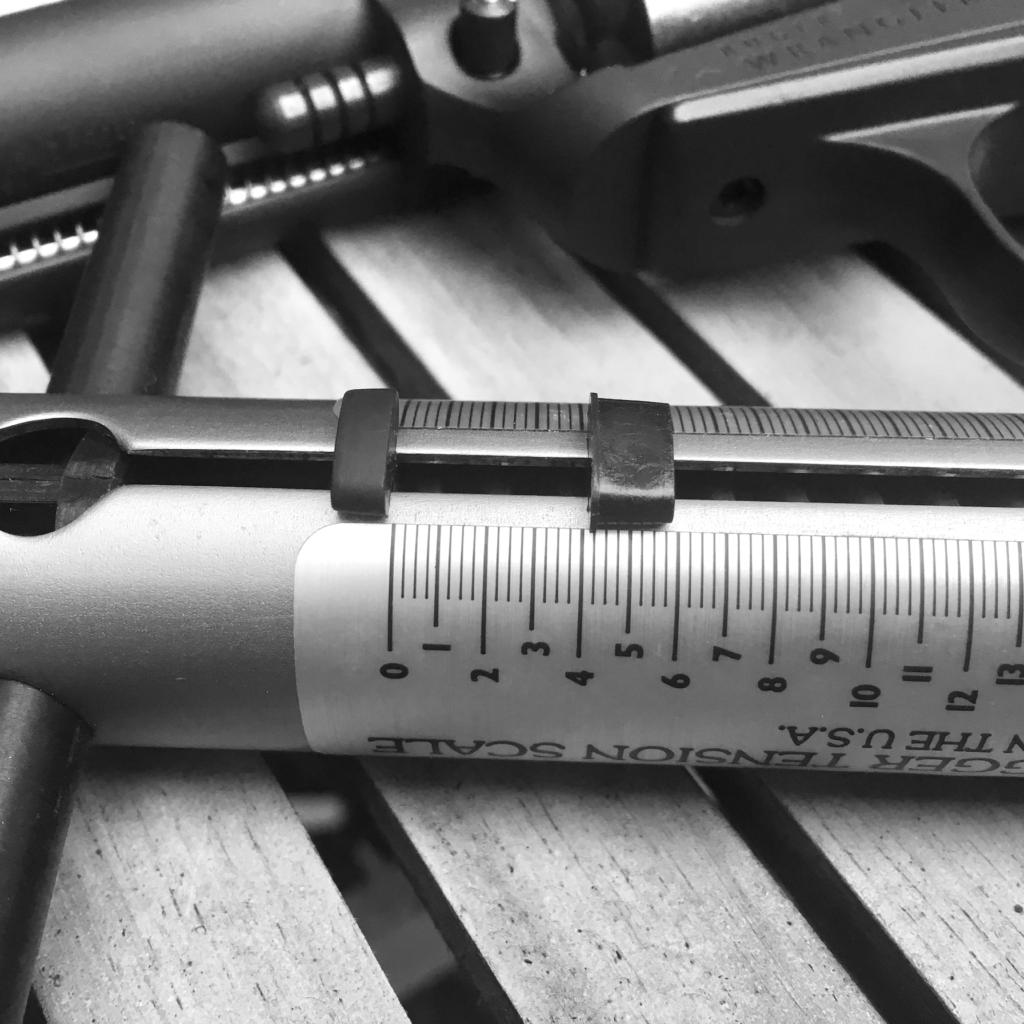
Sight Regulation: The one genuine complaint I will lodge against the Wrangler is its sight regulation. I will almost certainly take a file to its front sight blade. Even at casual shooting distances the point-of-impact is quite low. Both of the groups below were fired at 10 yards, one with CCI “Quiet” .22s, the other Remington Yellow Jackets. These two bullets are launched at opposite ends of the velocity spectrum, yet each prints several inches low at a mere 10 yards. Though we figured out our holds at 5 yards pretty quickly, this is certainly the most frustrating aspect of the Wrangler.
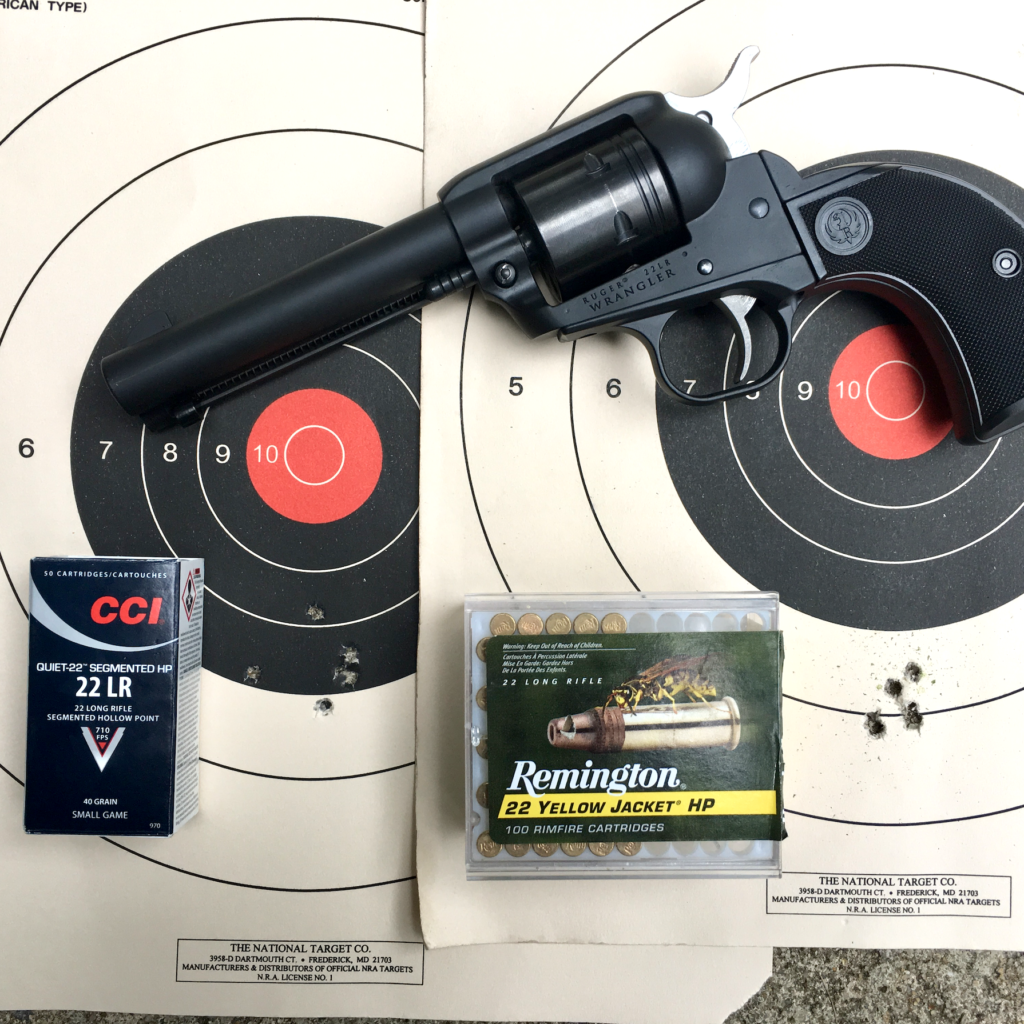
Reliability: I fired a bunch of ammo through this gun. I’d be afraid to put a number on it, but it’s probably somewhere between 500 and 1,000 rounds. With CCI alone I sort of spanned the power spectrum, shooting CB Short, Longs, Velocitors, and Stingers. My favorite rounds, though, were CCI’s “Quiet-22”, a 40-grain segmented JHP, and Remington’s 33-grain Yellow Jackets. The Yellow Jackets speak to me from childhood, reminding me of the perpetually 2/3s full box of of the little cartridges on the shelf beside my grandfather’s Remington 552 Speedmaster. Turns out the Ruger Wrangler likes them quite a bit, too! The Quiet-22s became a favorite because they live up to their name – they are quiet!
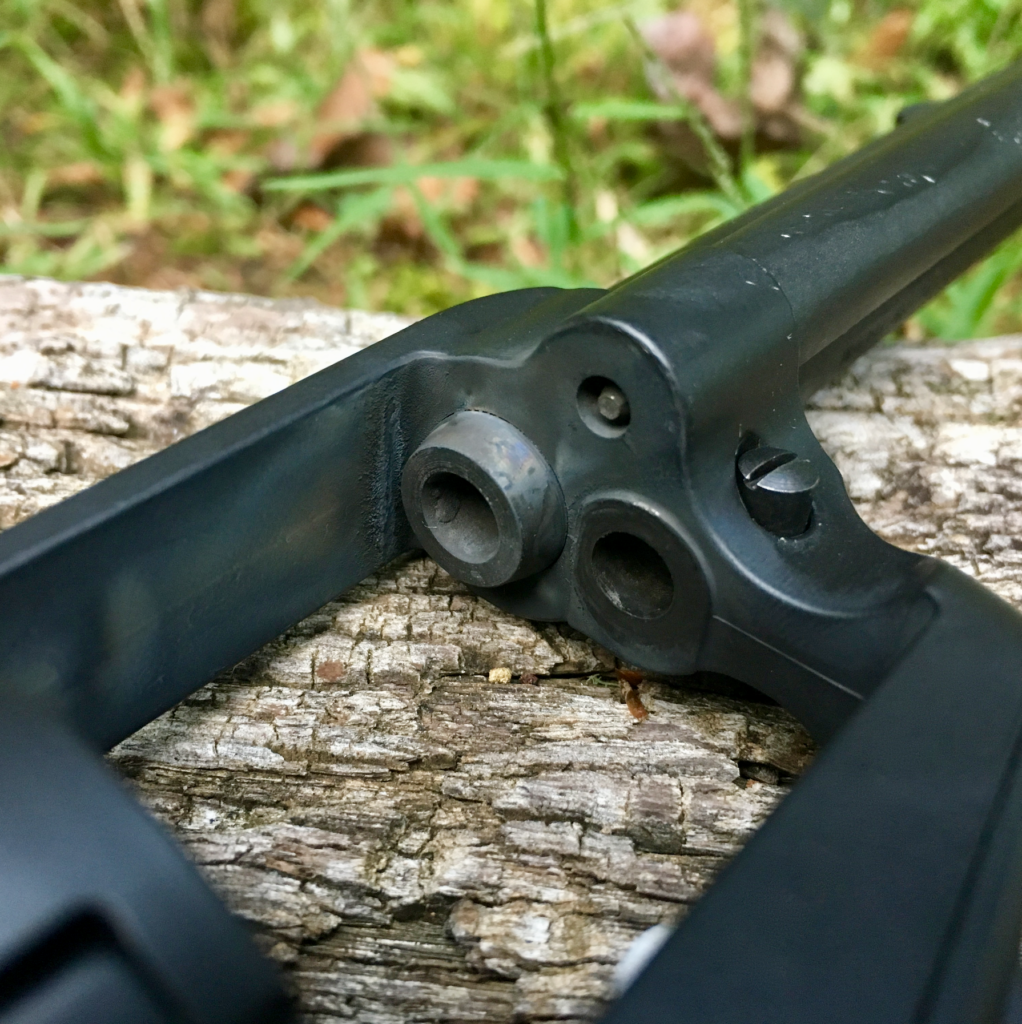
Through all of this the Wrangler was 100% reliable. I still have yet to have the first failure to fire. Every hundred rounds or so the gun does get a little gummy. Seating cartridges requires just a bit more force, as does getting them out. A quick hit of some Hornady One-Shot (my preferred lube) and pass or two with a bore snake and you’re good to go.
The .22 LR and Me
As you guys know, I am not the biggest fan of the .22 Long Rifle. I don’t have a whole lot of history with this dirty little cartridge. As soon as I received the Ruger Wrangler and the novelty wore off I questioned whether I’d be the best reviewer of this diminutive six-shooter. I’ve warmed to the the little .22 LR, and while it isn’t as fun as a range session with a big-bore revolver, it does some things those guns can’t do.
I might’ve mentioned it before, but I could safely shoot just about anything in my yard. I won’t, because I don’t want to drive the neighbors crazy, or announce all the various firearms I have up here. But the Wrangler with some .22 CB Short or CCI Quiet-22 loads? I’ve got no problem shooting those, and neither do my neighbors.
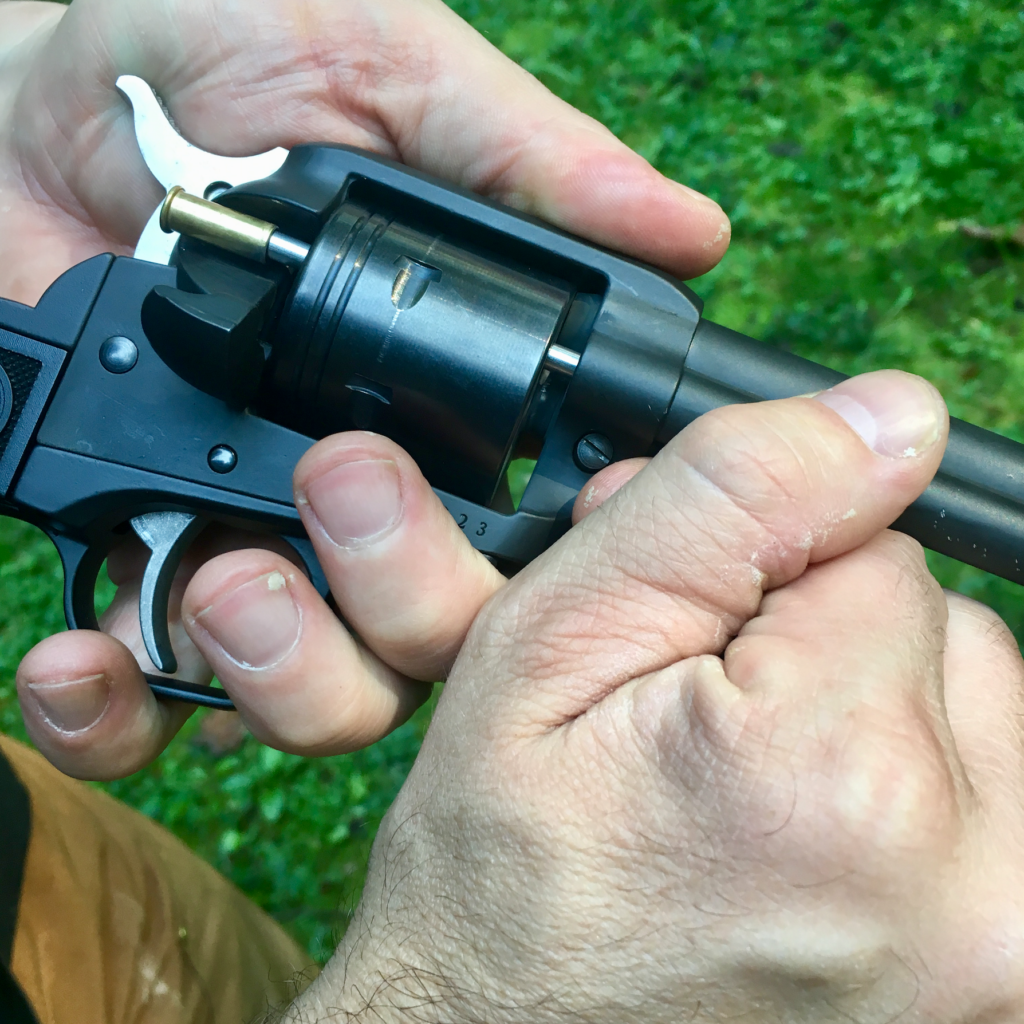
The Wrangler has given me an ability I wasn’t sure I’d ever have: to discretely do a little shooting in my very own yard. If I’m not able to get the range for a few weeks, I can supplement my dry practice with 50 or 100 rounds of .22. Here’s where the Wrangler’s not-great trigger is actually helpful; it requires you to really focus on what you’re doing. This promotes intense focus on moving the trigger without moving the sights. This may not sound like much, but mixed with daily dry practice it goes a long, long way.
The .22 LR and My Lady
My girlfriend is what you would consider NDP (non-dedicated personnel). She enjoys shooting and is actually quite good at it. She even attended a Chuck Haggard course with me, and were it not for a scheduling conflict would be at Greg’s upcoming class with me. But she doesn’t carry, doesn’t want to, and would probably never dream of going to the range on her own. But she loves that Ruger Wrangler!
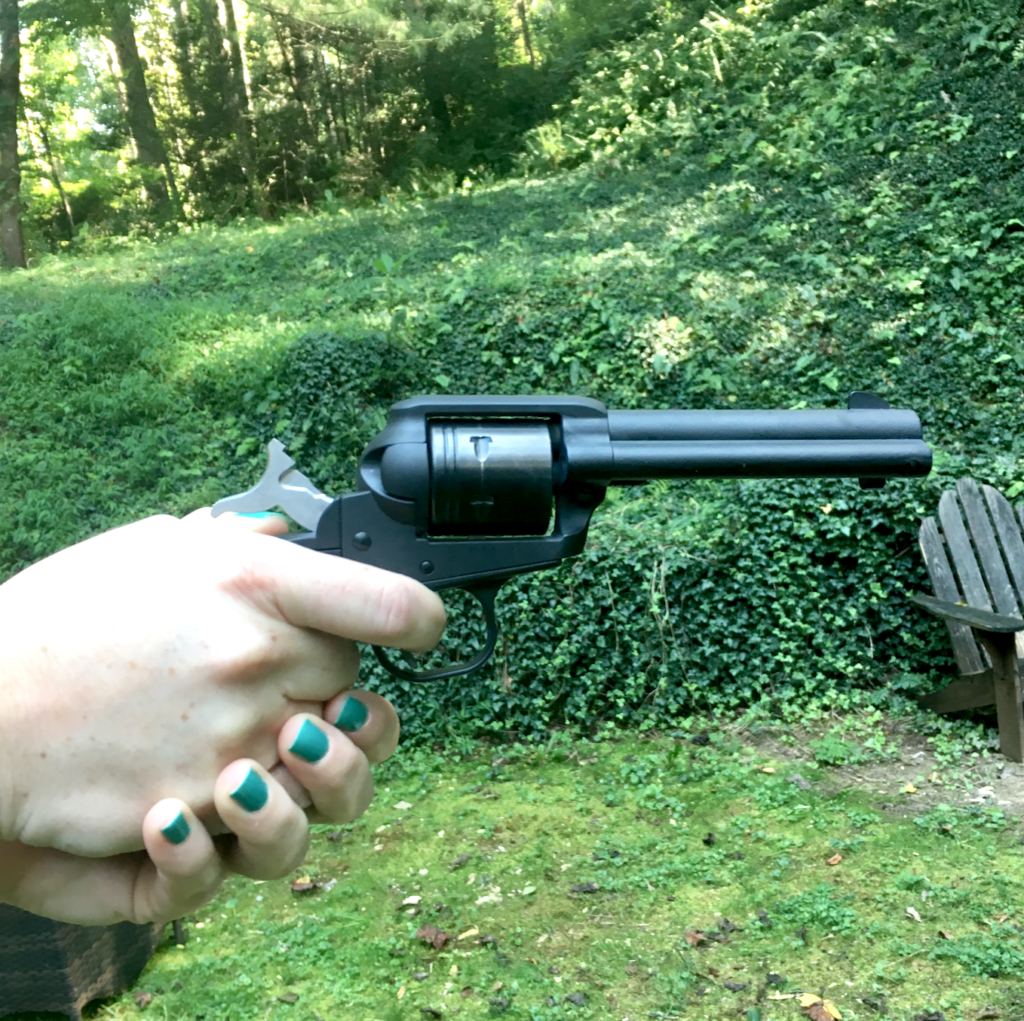
Many is the Saturday afternoon when we’ve taken some cans into the backyard and passed a fun hour or two. Sometimes she’s been the one who has suggested. Once or twice while I’ve been away for work, she’s even gone outside and shot up a can or two by herself! To me, that’s pretty cool and speaks more than her words ever could.
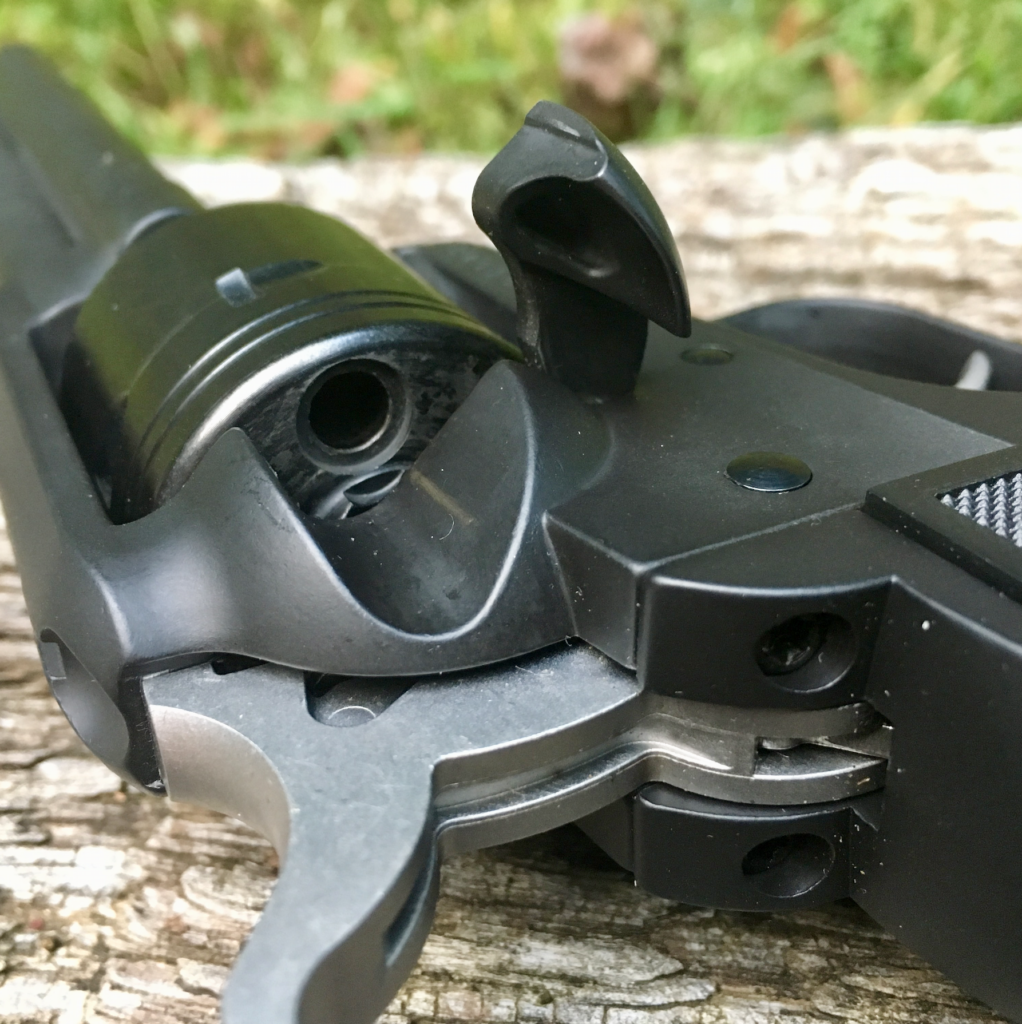
I’ve honestly been surprised at her strong reaction to the Ruger Wrangler. She reports that she likes the sure, positive safety of having to cock the hammer, and the small size and light weight. She also loves .22 LR for its near total lack of recoil. Though she’s quite capable with bigger revolvers, the Wrangler is a completely stress-free experience for her. I really appreciate that and I’m really glad I had the presence of mind to purchase this revolver.
The .22 LR and Kids
I have also put the Wrangler in the hands of some kids, aged 7, 9, and 14. A few weeks ago my sister and her family came in for a visit. I decided to get the kids out and do a little shooting. Only one of them, the 14-year old, had ever handled a firearm or shot. After a quick safety lesson, and fitting of eye- and ear protection, they each got to shoot a couple cylinders.
I don’t think you could conceive of a better firearm for this purpose. The single action gave me a comfortable safety margin around shooters with marginal (which might be a generous characterization) muzzle discipline. The single action also allowed me to instantly assess the state of the gun. Though no lightweight (at 30 ounces) the Wrangler is both small and light enough for even small hands. The youngest had to “choke up” a bit on the grips to reach the trigger, but not in a way that was unsafe. I’m happy to report all the kids managed to hit a can or two, all of them had a proverbial blast, and we did so safely.
Best of All?
Finally, the most important gift the Wrangler has given us is the ability to love IPAs again at all! When we get four or five in the refrigerator that have been there, taking up space for a few weeks. . . Like a bad-beer posse, we’ll round ’em up. We’ll take them outside, give them a good shake, and, throw ’em up on the bank. A Yellow Jacket or CCI Stinger makes for the best time you’ll ever have cleaning out the fridge!
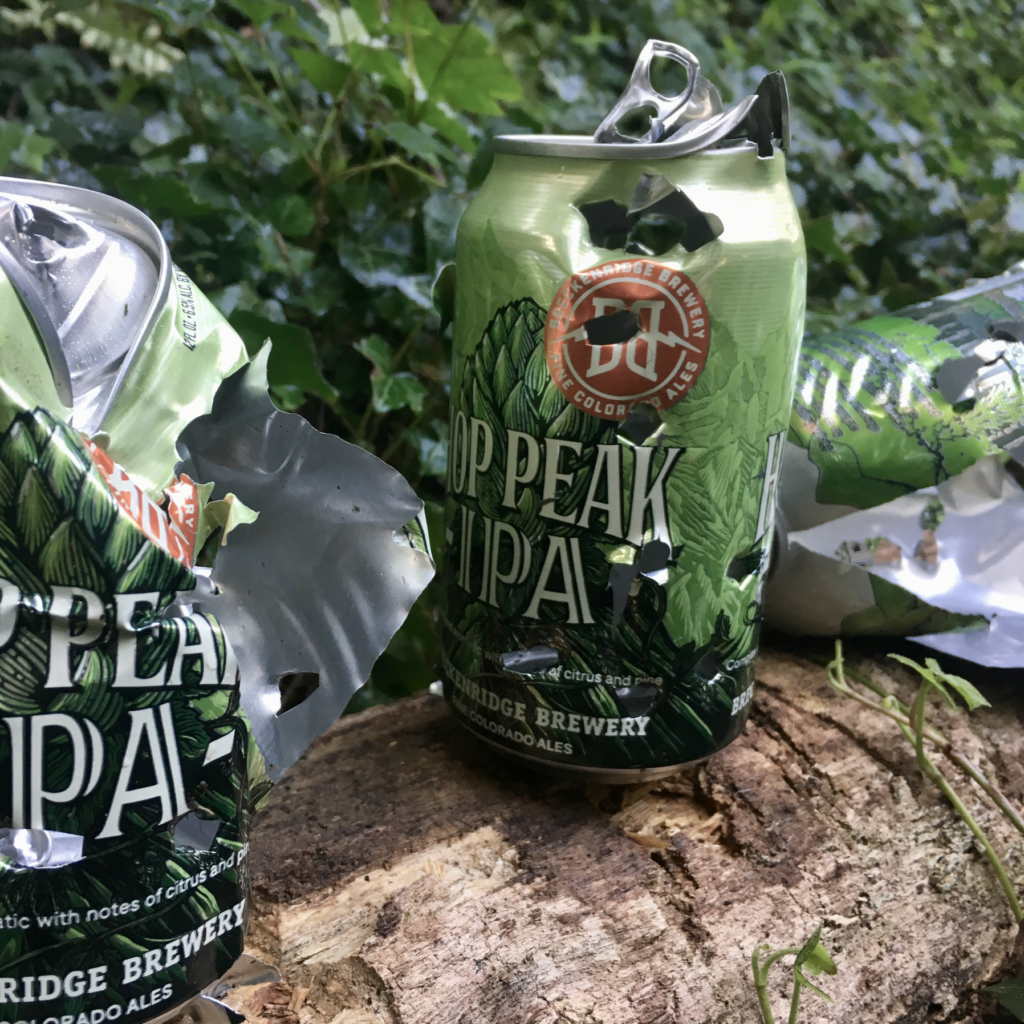
The Bottom Line
I’ve been a .22 naysayer for years. The Ruger Wrangler has just about changed my mind on the matter, however. It has helped me find some definitive reasons to have a .22. I would have missed a few of these if I hadn’t had the Wrangler handy. My girlfriend wouldn’t have found out how much she loved shooting .22s. I wouldn’t have pulled a gun out for the kids and that would have been a missed opportunity. And I sure wouldn’t be shooting in my backyard.
The Wrangler is about ideal, as suggested by Ruger literature, “as your first revolver. . . or your next.” At around $200 it’s very accessible, and it’s from one of the most trusted revolver manufacturers out there. It’s fit and finish are far better than I expected based on price, but no surprise when I consider the manufacturer. And most importantly, it works. I’m aggravated by the sights, but we’ll see if I can do something about that. In the meantime, check out the Wrangler. Even if you aren’t in the market for a single action .22 wheelgun. You may find you have good reasons for owning it that you just don’t know about yet!

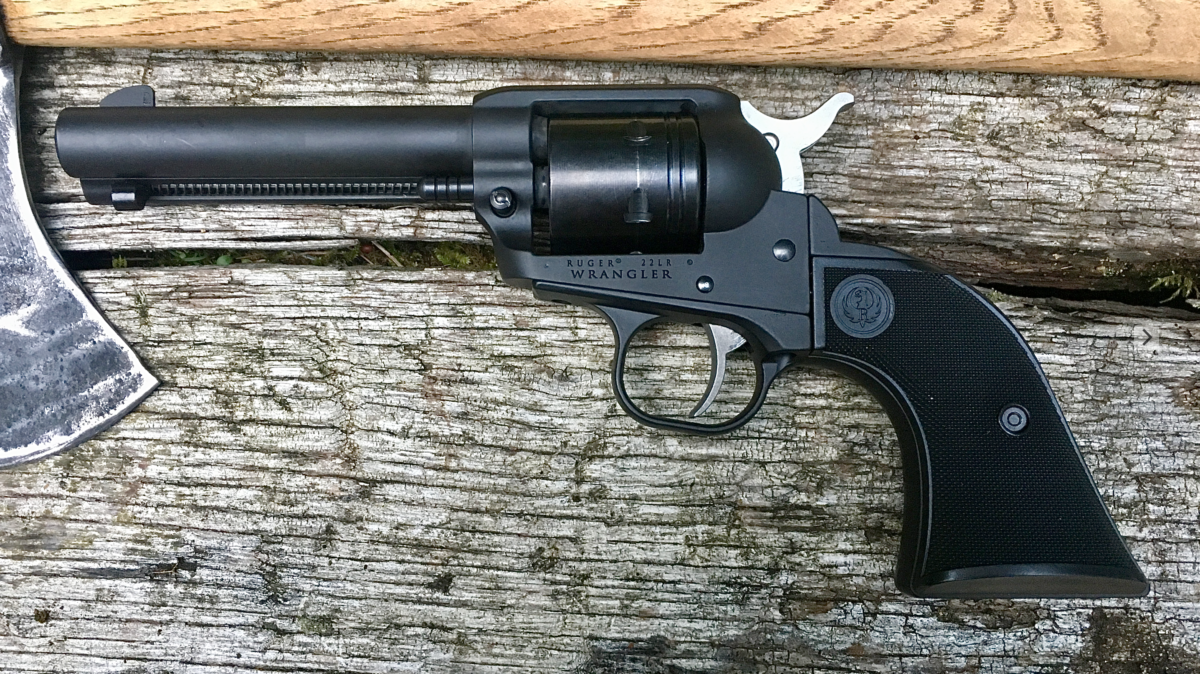
Good use for IPAs. I am a UK bitter and Brown Ale sort, though my blood sugar and low-carb diet now sends me to a sipping whisky instead. Distilling turns sugar to alcohol….real-world alchemy!
As for the Wrangler, it is a perfect gun for plinking and teaching a new shooter. I had been tempted, myself, though a used Blackhawk, the Single Six’s big brother, came my way first. FWIW, if you do hanker for a Single Six, they can be had used, in good shape, for under $300 around here. The dealer where I snagged my Blackhawk had non-convertible Sixes without original boxes, for as little as $250.
I’m going to go back and read the rest of the article, but I had to say a quick “Amen” to your opinions on beer.
Heh, everyone needs a .22! I realize it’s not perfect, but I think you covered most reasons I can picture for having one. I’m also in agreement with you on the proper use of an IPA!
Hi, Justin –
Sometimes we need to remember that shooting is fun, and this article is a good reminder of that. You talk about this being your first .22, but I’m curious: is this also your first single-action? I don’t remember you talking about any SA revolvers before. If so, I look forward to single actions sinking in and slowly taking over – pretty soon your dry fire is all about the new Blackhawk, you’re dreaming about a Bowen custom Bisley, you start shooting your DA revolvers only in SA mode…
Ok, maybe that last one won’t happen, but SA wheelguns really are fun! Hope to read more from you about them.
Hi, Tyson! Thanks for writing in. This isn’t my first single action. The first one of those (and my first love) is the 1911 😉
You’re correct, this is my first SA revolver. I would certainly like to review some more (I really dig Ruger’s Single Seven in .327, but alas it’s a distributor exclusive). I doubt I’ll be buying any; I get sold on guns if I can be sold on a purpose for them. Outside of the wonderful things this .22 can do, I doubt I need a SA revolver when a DA will do. I get that not everyone is like that, but that’s me.
Thanks again for writing in,
Justi
Tyson, you’re spot on. Sometimes we get so preoccupied with the serious side of firearms and training that we can forget to enjoy the fun. Sometimes, the only “justification” you need for a gun, is that it’s just a hoot to shoot! When you look at the fun-to-cost ratio, there’s nothing better than a .22, and I’m so glad to see Justin enjoying this one like he is. What a great choice for a “fun gun!”
Thanks for the review. I haven’t looked into this gun too much, but I liked what I’ve seen and this confirmed what I expected. At this point, if I were to get a single action, the Wrangler is a really strong contender. I don’t really need any new calibers, and a single action in a larger caliber probably wouldn’t see much use (I wouldn’t carry it defensively, and I don’t have any interest in handgun hunting). As a result, any single action would need to be an affordable plinker/range gun. I can’t think if anything on the market that beats the Wrangler for that criteria in a revolver. If Ruger added adjustable sights without raising the price more than about $50 or so, that would be even better.
Interestingly, the product (from another manufacturer) that this Ruger was designed to compete with can be purchased in a fixed or adjustable sight version, and the premium seems to be around $30 for the adjustable one. I’d much rather have the Ruger, even with its fixed sights, but perhaps we’ll see an adjustable version from Ruger down the road?
First off, an early on quote: “The other, major differences are the cylinder and grip frames. Rather than steel as has always been used in the Single Six, the Wrangler’s frame is cast aluminum.”
Ruger has used cast aluminum grip frames on all their Single Six, Super Single Six, and Blackhawks since day one. Steel grip frames are standard on the Super Blackhawk, and steel frames are also available for the Single Six/Blackhawk family (they take the same part numbered frame). That aside, they are brute strong revolvers.
Aside from that, there is little NOT to love about the .22LR and a single action revolver. My ancient Super Single Six Convertible has had more rounds through it than I can fathom; going back to the days when Sears Roebuck and Montgomery Ward stores sold their private label (Federal Cartridge) ammo for $4.00 a brick of 500 rds.
Ruger’s triggers can be slicked up if (the operative word being ‘IF’) you know what you’re doing. They are an excellent platform for trigger practice, and combine that with the exhorbitant cost of .22LR compared to, let’s say, factory .357 Magnum ammunition, it adds up to a lot of good practice time with instant target verification of your trigger technique.
Pardon my ambiguity/poor wording there. You’re right; the only material difference IRT frames is in the cylinder frame.
Possibly the last thing I needed was a Ruger Wrangler, but when I picked up one a pair of hundreds flew out of my wallet.
The use case described in the article is spot-on as it has already proven its value as an intr- to-handguns firearm. One note on ammo and sights. I’ve found that standard velocity 22LR shoots (for me, my eyes) to point of aim at 15 yards and acquired a stash of it’s favorite brand.
It did take some familiarization with the fixed sights but, that accomplished it is fine.
Don’t care for the competing vendors gun for a variety of reasons. So my new-to-handgun clients will start on the Wrangler, close range, to learn grip/stance/sights/trigger.
Great article! I was already pretty interested in these, now I am 100% certain I’m going to pick one up!
Great review Justin! I’ve been shootin’ .22s since I was five years old and I just bought another 10,000 rounds. I love shooting .22 revolvers, pistols, rifles, anything that I can plink with. One of my newest favorites is the Ruger 10/22 Takedown. I like the backpack bag it comes in and how compact it is with a scope. I brought it on a summer family vacation to South Dakota and Wyoming and my daughter and I had a ton of fun shooting bottle caps and soda cans (instead of IPAs I suppose).
If you guys think popping IPA’s are fun, try some of the really poor tasting excuse for beer: Bud Light Chelada’s……red mist fun, with no bad taste and still less filling!!!
A single action 22LR is more fun than should be allowed, and both my Single Six style revolvers are enjoyable……albeit only one is 22LR capable: a convertible model. My other is a Single Nine, dedicated 22 Magnum.